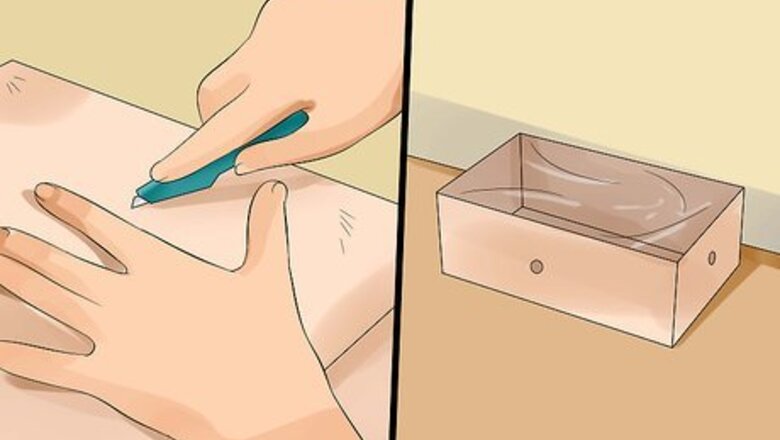
views
Catching a Loose Gecko in Your House
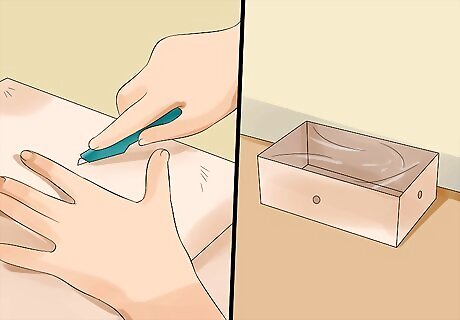
Create a humid environment. Many geckos will be drawn to a warm, wet environment. You can replicate this climate by creating a trap that will lure your gecko in. Cut a small hole in three of the four faces of a shoe box. Run several sheets of paper towel under warm to hot tap water. Line the floor of the shoe box with the warm, wet paper towels. Set the box up against a wall in a quiet part of the house. Check the shoe box at least once every hour. if no gecko, try the next trap.
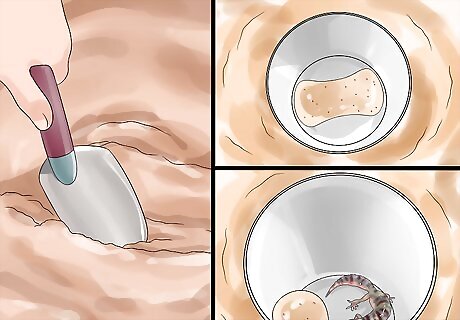
Set a pitfall trap. This will only really work for catching geckos outdoors. A little planning will help you create an excellent in-ground gecko trap. Dig a hole in the ground, as deep as the height of a bucket. Create a series of in-ground holes to maximize the efficiency of this method. Put a wet sponge in each bucket so that the geckos you catch do not dry out, in case they are not found right away. Once submerged in the ground, cover the opening of each bucket with a piece of netting or fine mesh. The covering should be big enough to completely cover the mouth of each bucket, but not so big that the gecko will be able to climb out once it falls into the bucket. Check the buckets every couple of hours. bait will increase your chance of catching a gecko.
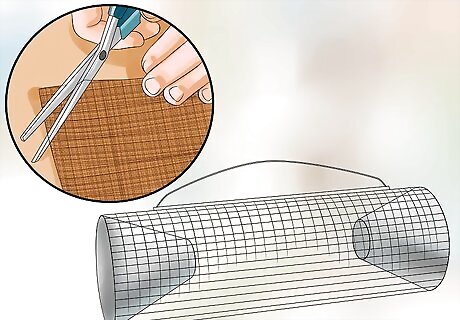
Make funnel traps. Funnel traps do not have to be dug into the ground like pitfall traps, and rely on a setup that allows a gecko to enter the trap and have difficulty exiting the trap. Cut 0.125-, 0.25-, or 0.33-inch mesh hardware cloth into 18-inch wide sections. Roll each trap body into a cylinder, and secure it into that shape with zip ties, rubber bands, or twine tied around the tube. Roll additional pieces of mesh hardware cloth into funnels with a narrow opening, around two inches (roughly five centimeters) in diameter. Insert the funnels into each end of the cylinder, with the narrow points inside the tube. Cut flaps into the mesh hardware cloth that hangs over the opening on each end, such that geckos could easily climb into the tube but would not be able to easily climb out. Be sure to leave a wet sponge in the cylinder of each funnel trap you set up, and leave the trap in a shaded area for outdoor setups so that the gecko(s) will not overheat in direct sunlight. Make the trap more alluring by leaving a couple of small insects, such as crickets, inside the trap.
Catching a Gecko
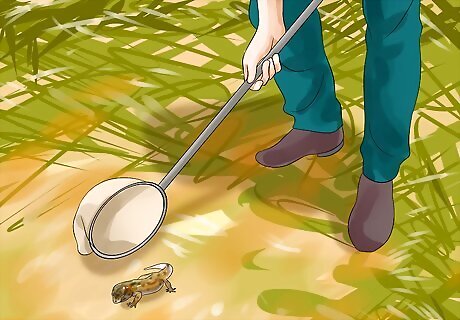
Use a net. Having a big, long net will be the easiest way to catch a gecko, as it allows you to capture the gecko from the greatest distance. Hover the net slightly above the gecko. Try to center the net's rim around the spot the gecko is standing. Drop the net as quickly as possible. Hold the rim of the net down against the ground or wall to contain the gecko, once you've trapped it.
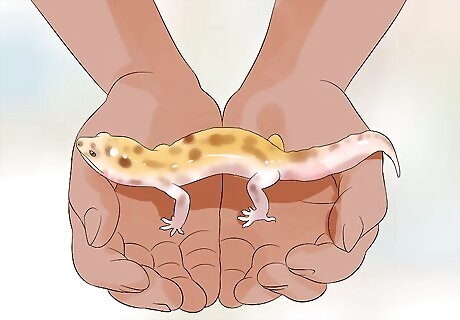
Use your hands. Wear thick gloves if you're unsure whether the gecko might bite. Cup your hands together, creating a hollow tube with your hands. Hover your hands slightly above the gecko. Drop your cupped hands down over the gecko. Be sure that the gecko won't be able to climb out of your hands. Keep the bottoms of your hands flat against the ground, and your fingers tightly knit.
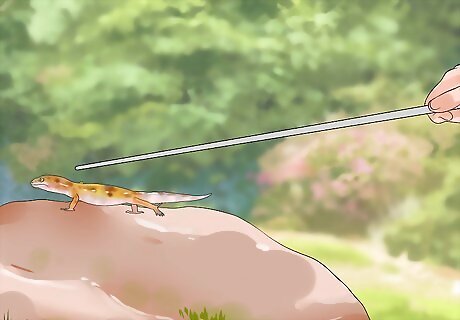
Use a stick. You can use a stick to gently "guide" a gecko in the direction you want it to go. Slowly lower the stick slightly behind the gecko. When the gecko moves, continue to "herd" the gecko in the direction you want it to go. Be careful not to harm the gecko. You should never actually touch the lizard with the stick. It should simply be used to guide the gecko toward a net or a second person with open hands.
Finding a Gecko
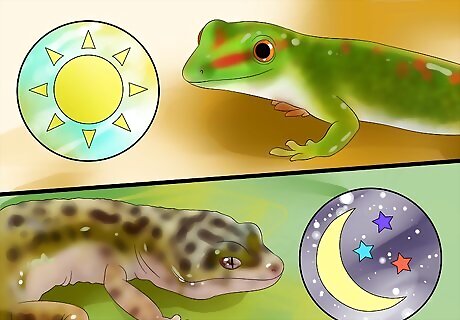
Know your gecko's active periods. Most geckos are active at night. This makes it easier for them to hunt for insects and avoid the extreme temperatures of the desert during peak sunlight hours. However, some geckos, notably from the genus Phelsuma, are diurnal, or active during the day. These geckos are called day geckos. Knowing whether the gecko you are trying to catch is active during the day or during the night will determine when and how you approach these lizards. Geckos from the genus Phelsuma are indigenous to Madagascar and several islands in the Indian Ocean, but have been introduced to Hawaii and Florida in the United States by humans. Geckos from the genus Lygodactylus are native to parts of Africa, including Madagascar, and parts of South America. Geckos from the genus Gonatodes are native to the Caribbean Islands and parts of Central and South America. Geckos from the genus Eurydactylodes are native to the Southwest Pacific region, located in New Caledonia and Koumac. The Moorish gecko, from the genus Tarentola, is indigenous to South Europe and North Africa, but has been introduced by humans to Florida and California in the United States. Tokay and leopard geckos are naturally nocturnal, but have been observed in captivity to adjust to diurnal cycles. If you have a pet tokay gecko or leopard gecko, it may have adapted to your diurnal schedule, and you may need to search for your gecko during the day.
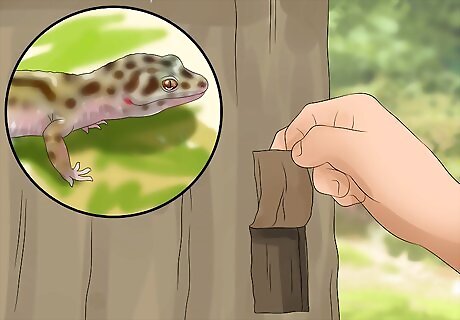
Know where to look. If you decide to look for a nocturnal gecko during the day (or a diurnal gecko during the night), knowing where the gecko sleeps may be helpful. Many geckos seek out sheltered, warm places to sleep. In the wild, geckos may sleep hidden under tree bark, in natural crevices, or underneath larger objects. If you're looking for a wild gecko in your yard, try peeling back loose tree bark or lifting fallen tree branches. If you're searching in or around your home, look for small cracks in the foundation, gaps in the siding or floor boards of your home, or anywhere else a small lizard might fit.
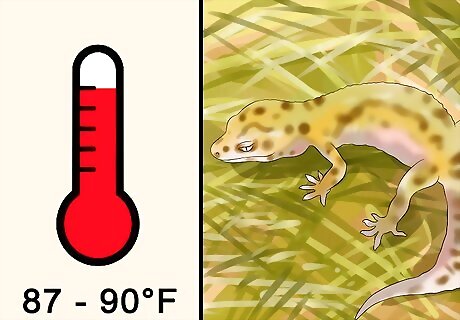
Understand a gecko's ideal temperature. Geckos are cold-blooded, which is important to keep in mind as you search for a gecko. If you are trying to find a gecko that is loose in your house, and you keep your home air conditioned, the gecko may seek out a warmer location within your house, such as underneath heat-emitting appliances like refrigerators.
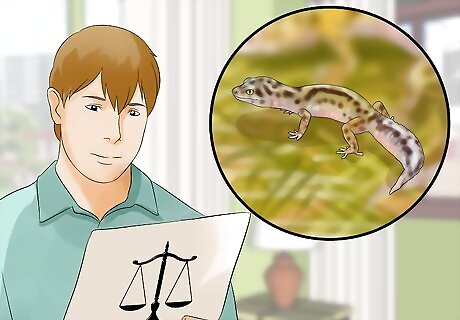
Know the legality of keeping a wild gecko. Laws that govern the catching and keeping wild animals, including geckos, can vary widely from one state to another, and from one country to another. Check with your local Department of Agriculture or your country's office of disease control, or contact your local government on regional regulations regarding the keeping of wild geckos as pets.
Handling and Housing a Gecko Safely
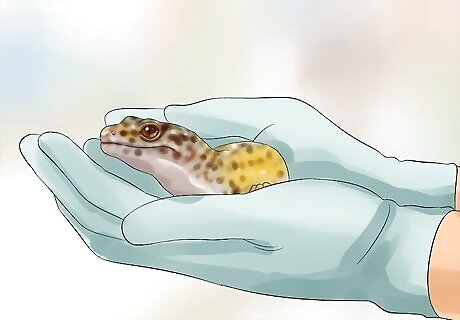
Pick your gecko up carefully. It's best not to handle geckos too often, especially if the gecko is still growing accustomed to living with and being handled by you. Some geckos may even bite humans who try to pick the gecko up or handle it. But if you must pick it up, be sure to exercise great caution to avoid frightening or injuring the gecko. Wear gloves if your gecko is prone to biting. This will protect your hands, in the process, may help prevent accidental drops that result from unexpected bites. Sit on the floor. This way, in case you accidentally drop your gecko, it won't fall far. Never squeeze or handle your gecko roughly. Do not grab your gecko by the tail. It may come unattached, and it can take up to 40 days for a new tail to grow. Try to hold your gecko with open hands.
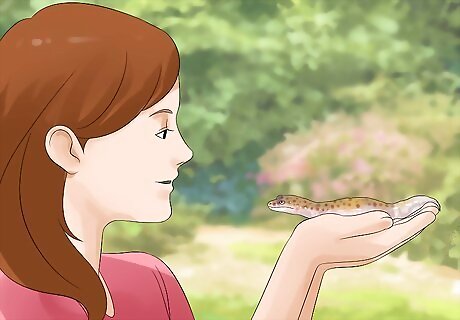
Let your gecko get used to you. Once your gecko has been adequately adjusted to its new living environment, it will need to get used to being handled by you. Spend 10 to 15 minutes each day letting the gecko run over and through your loose fingers and across from one hand to the other.
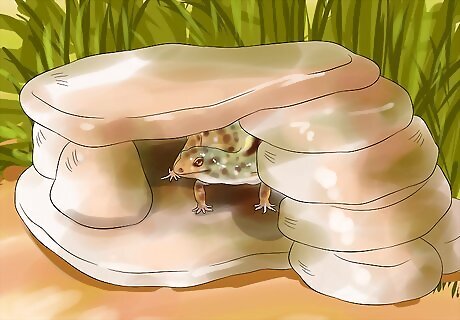
Create a comfortable habitat. Understand what kind of environment your species of gecko prefers, and try to replicate that environment as best you can at home. Nocturnal geckos should be kept in a dark enclosure at night. Give your gecko small plants and little objects to hide under or behind. Be aware of whether your species of gecko can climb walls. You may need to put a mesh screen over the enclosure to prevent your gecko from escaping easily. Keep a clean water bowl in your gecko's enclosure. You may also want to spray a mist of water onto the plants in the enclosure, as this may help further replicate what your gecko is used to in the wild, depending on its species. Feed your gecko insects. Some geckos prefer crickets and mealworms. Others prefer smaller insects, depending on the size and dietary needs of each gecko species. Young geckos may need one to three insects every day. Older geckos may prefer being fed four to six insects three times each week, or roughly every other day. Geckos can eat just about any insect that fits between their eyes.










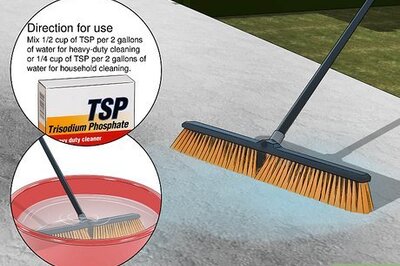






Comments
0 comment